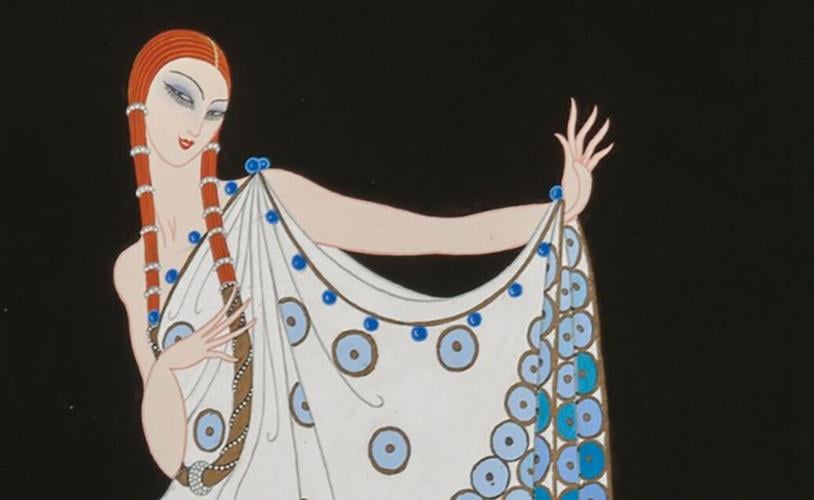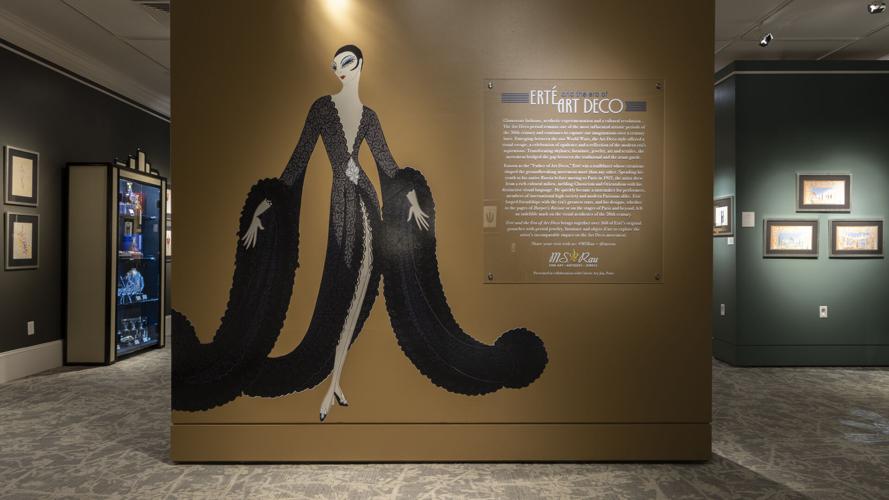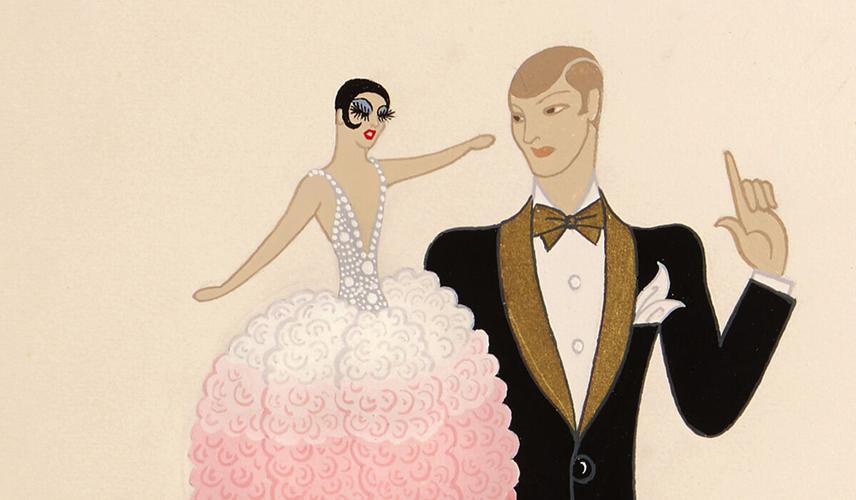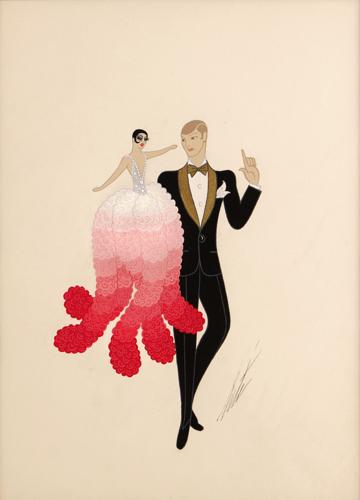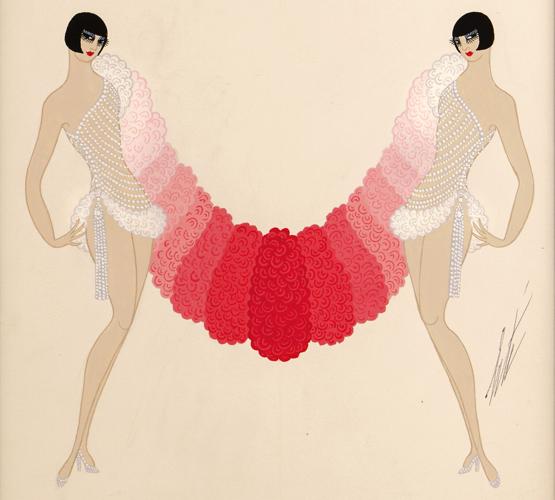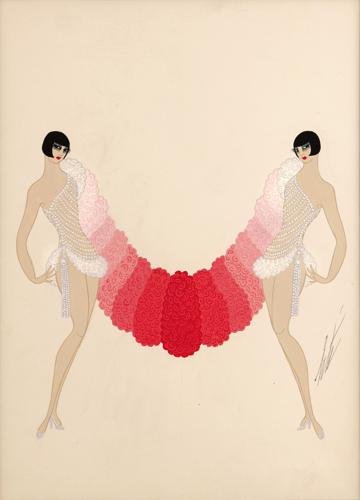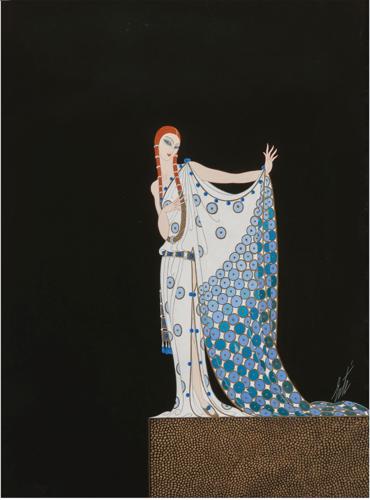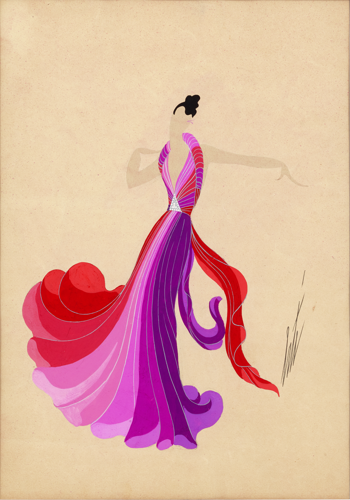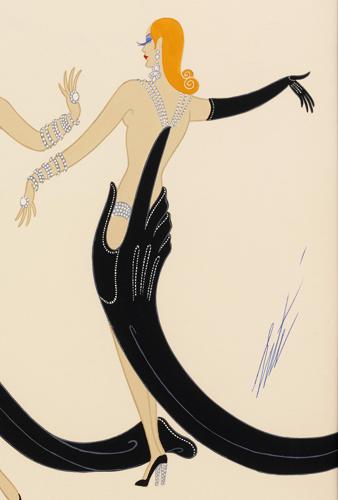Is there a more costume-conscious city anywhere than here? Maybe not. We Crescent City residents are an army of self-styled designers, armed with pinking shears, sewing machines, box knives and hot glue guns.
On Mardi Gras morning, we march, in a see-and-be-seen masquerade unlike any other. Anyone who’s been there can tell you, compared to other places, we are costume-consumed.
That’s why the current exhibit down at the M.S. Rau art and antique emporium extraordinaire on Royal Street is an absolute must-see for anyone in the 504 area code. The exhibit includes 160 miniature, achingly exacting, gouache paintings of glamorous costumes for the ballet, the silver screen and magazine illustration. The small marvels are the work of one of the world’s all-time favorite artists, Russian-born Romain de Tirtoff, who’s better known by his nickname, RT, which the people in his beloved Paris pronounced Erté.
Erté’s life and career spans almost the whole 20th century. Born in 1892, he was a cultivated kid, regularly attending the ballet in St. Petersburg. Young Erté was destined to be a career officer in the Russian navy, like his father the admiral, but he chose to dance en pointe instead. And to draw. By the time he was 23, he was living in The City of Light, painting cover after cover after cover for Harper’s Bazaar magazine.
His style combined the sophisticated streamlining of art deco with some of the leftover lush, twining grace of the earlier art nouveau period. He rendered women and men as svelte, yet curvaceous creatures, posed with extraordinary elegance and abundant sexuality. From the flapper era onward, the word Erté was short-hand for a certain erotic, epicurean ideal.

Erté's concept of a billowing feather boa uniting two figures in one costume, seen here in his 1974 design 'Les Sisters,' could be the inspiration for Carnival costumes to come.
To this day, if you see Beyoncé draped in a sheer gown festooned with a flowing mesh of glittering baubles, you can bet her costume designer was, to some extent, channeling RT. In fact, the staff at Rau found a photo of a Beyoncé outfit in which the superstar seems to be caressed by gloved hands, which is the same concept as Erte’s “Ce N’est Que Votre Main, Madame,” of 1974, where a gigantic opera glove gently grasps a woman’s nude anatomy.
Erté died in 1990 at age 98. If his influence had only lasted from the 19-teens to the 1950s, he’d still be remembered as one of the world’s most celebrated designers. But then, in the psychedelic 1960s, popular culture rediscovered the nouveau-deco design continuum. Grateful Dead posters suddenly looked like something you’d see in the Paris subway circa 1900 and Erté prints popped up on the walls of every restaurant and apartment where an ambiance of cool, retro, hedonistic sophistication was sought. In the 1970s and '80s, Erté was revered as a god, right up there with Warhol.
And now he’s back, hanging in the Vieux Carré. A second-floor Rau gallery has Ertés lined up like a box of chocolates. If you’ve ever tried to paint with gouache — a kissin’ cousin of watercolor — you know it is a treacherous, unforgiving medium. Those tiny, tiny pearls, eyelashes, feathers and filigree that Erté produces with apparent ease are, well, impossible. Forget AI, give us more RT.

Erté's 'Ce N'est Que Votre Main, Madame,' (It's Just Your Hand, Ma'am) is an example of the Art Deco master's ability to evoke glamour and erotica in his costumes.
As you wander the show, look for the design of a comic 1959 gown in which a rodent seems to scurry across a woman’s lower region, having escaped from the mouse trap clamped onto her hand.
Look for “Les Sisters,” in which a billowing feather boa unites two women in one costume.
Look for 1974's "Le Ventriloque," a very Erté-looking young man holding a puppet in the form of a very Erté-looking young woman.
Look for the very strange Venus flytrap costume from 1917, in which the wearer is threaded from head to toe with creepy red blood vessels.
And look for the 1959 surrealistic design titled “Le Cinema Cochon,” which depicts a gown made from the celluloid film from an Eadweard Muybridge-style movie of a running pig. How crazy is that?
For most of us, M.S. Rau — which has been around since 1912, the same year RT set off for Paris — is a museum, a place to momentarily commune with art we couldn't imagine owning. But for those readers with a handy $12,500 to $44,500 lying around, it’s the place for one-stop Erté shopping, through Jan. 3.
The show “Erté and the era of Art Deco” is located at 622 Royal St. Hours are Monday through Saturday, 9 a.m. to 5:15 p.m. For more information and to view all of the Ertés, visit the M.S. Rau website.

'Le Ventriloque,' an exquisite 1974 gouache by the Art Deco master Erté

